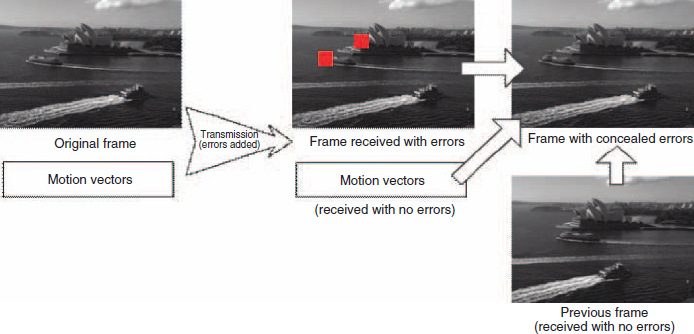8.3 Error Concealment
There are numerous techniques with the goal of preventing the occurrence of channel-induced errors, reducing the sensitivity of the compressed video stream to these errors, or recovering from errors, but the reality is that errors will eventually be introduced by channel impairments. This section discusses techniques that allow the decoder to conceal and limit the effects of these errors on the reconstructed video.
The general idea for error concealment is to replace part of a missing frame with an estimate of it. This involves using other parts of the video sequence that are correlated with the missing one and possibly combining it with other available information so as to obtain the best possible estimate for replacing the missing part of the video. Figure 8.9 illustrates what is perhaps the best case scenario for error concealment in legacy single-view video. In this example, two macroblocks of a frame have errors after decoding and need to be discarded. Fortunately, we assume that the motion vectors for the frame with errors and the previous frame are received with no errors. In this case, the discarded macroblocks can be replaced by using the correctly received motion vectors to estimate the lost macroblocks by doing motion compensation from the previous frame.

Figure 8.9 Illustration of error concealment in legacy single-view video, replacing lost macroblocks ...
Get 3D Visual Communications now with the O’Reilly learning platform.
O’Reilly members experience books, live events, courses curated by job role, and more from O’Reilly and nearly 200 top publishers.

